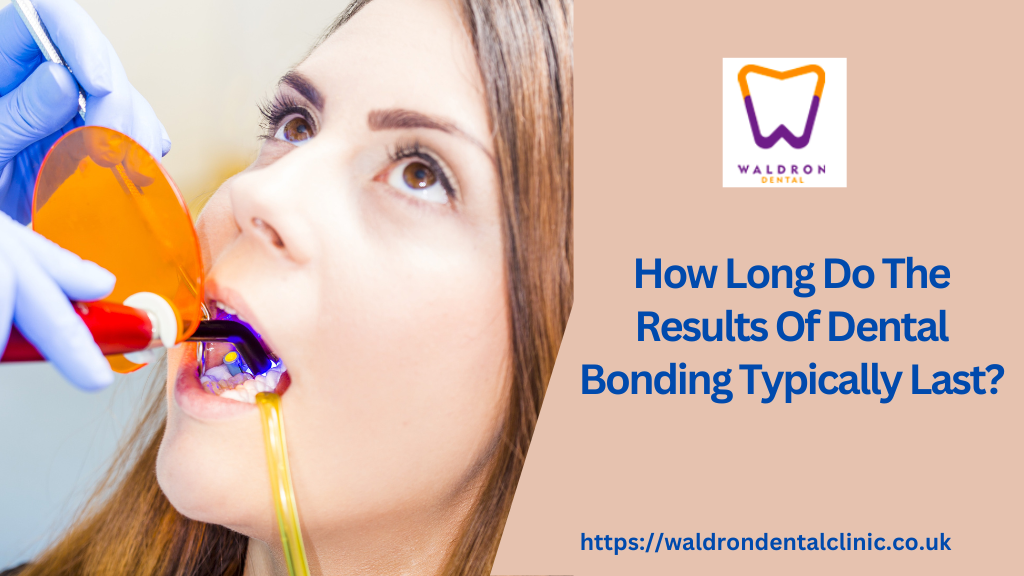As more and more Britishers are becoming conscious of their appearance and looks, the demand for cosmetic dentistry treatment has skyrocketed in the UK. According to a survey of 1000 British adults by RealSelf, 76% responded that they wanted to change something about their appearance. Among them, 43% of the respondents sought cosmetic dentistry treatment to improve their appearance and self-esteem. More importantly, the survey also showed that cosmetic dentistry was the most sought-after treatment in the UK for changing one’s appearance.
Among the cosmetic dentistry treatments available in the UK, dental bonding is a commonly used procedure. If you’re concerned about your stained, crooked, or chipped teeth that are ruining your smile, you can benefit from dental bonding to improve your smile and facial aesthetics.
But what is dental bonding and how long does it last? You may ask. Don’t worry; this blog contains all the information you need about dental bonding and how it can help you achieve your dream smile. So, continue to learn more about this cosmetic treatment option.
Composite Bonding Cost
According to the British Academy of Cosmetic Dentistry, dental bonding is a procedure in which your dentist will place a tooth-coloured filling material over crooked or blemished teeth to restore their aesthetics and structure. Dental bonding is an excellent option for fixing a variety of aesthetic tooth defects including chipped, crooked, mildly misaligned, and permanently stained teeth.
Since bonding is a cosmetic dental procedure, many people are concerned about its cost. The cost of dental bonding depends on various factors, such as:
- The Extent of Tooth Damage – the greater the damage of the tooth to be restored, the higher will be the treatment cost.
- The Number of Teeth to be Restored – the greater the number of teeth to be restored, the higher will be the cost of treatment.
- Type of Material – one of the most crucial factors determining the cost of bonding is the type and quality of material used. Some dental practices offer lower treatment costs by comprising on the quality. However, one should visit a practice that uses high-quality, durable materials, even if they cost more.
- The Dentist’s Specialty – specialist cosmetic dentists will charge more than general dentists.
- The Practice’s Location – dental practices in the suburbs have lower treatments rates than those in the Metropolitan areas.
Teeth Bonding Disadvantages
Dental bonding is an excellent procedure to fix various cosmetic dental issues. However, despite their numerous benefits, they also have certain drawbacks:
- Limited Lifetime – dental bonding materials are fairly durable. Still, they don’t last a lifetime. But their clinical life can be increased with proper oral hygiene and dietary care.
- Staining Potential – dental bonding composite can easily get stained with strong-coloured food and beverages if proper oral hygiene is not maintained. That is why, dentists recommend brushing one’s natural and bonding-restored teeth regularly with soft bristle brushes and fluoride toothpaste to prevent their staining. Furthermore, avoiding non-staining foods also goes a long way in preventing the staining of bonded restorations.
- Cannot be Bleached – stains on bonded restorations cannot be removed through professional whitening for natural teeth. So, if a bonded filling gets stained, it has to be repaired or replaced with a fresh one.
Teeth Bonding Vs Veneers
If you search the internet for cosmetic option to restore damaged teeth, you will two options commonly used for this purpose: dental bonding and veneers. So, what is the difference between them? Let us explain. As mentioned before, bonding involves restoring damaged teeth using a tooth-coloured material. Since bonding is applied directly to the teeth, it is called a direct restorative procedure.
On the other hand, a veneer, according to the British Academy of Cosmetic Dentistry, is an ultra-thin shell of porcelain or resins bonded to the front surfaces of the teeth to restore their shape and aesthetics. Dental veneers are prepared in the laboratory and then bonded to the prepared teeth using adhesive. Therefore, veneers are indirect tooth restorations.
Both bonding and veneers serve the same purpose. However, they differ in their method of fabrication. Your dentist will suggest whether bonding or veneers are suitable for you after a detailed clinical examination.
What Are The Pros And Cons Of Dental Bonding?
Let us look at the pros and cons of dental bonding:
Pros of Dental Bonding
- Lifelike Aesthetics – being tooth-coloured materials, bonded fillings blend in with the natural teeth and become virtually indistinguishable and offer lifelike aesthetics.
- Safety – unlike silver amalgam fillings that have safety issues, dental bonding is safe for use in the oral cavity.
Cons of Dental Bonding
- Bonded restorations can get stained easily if not looked after properly
- Bonded restorations are more expensive than silver amalgam fillings
Is Tooth Bonding Safe And Permanent?
Dental bonding is safe for restoring teeth and use in the oral cavity. However, these restorations are not permanent. Over time, these restorations get damaged and need to be repaired or replaced. Although the clinical life of bonded restorations depends on many factors, their average lifetime is between 3 and 10 years.
Are you looking for the best cosmetic dentist in London? Look no further. Waldron Dental offers high-quality cosmetic and general dentistry services to its esteemed customers in a comfortable environment and at affordable prices. We have a team of dentists who wil take care of all your dental issues and ensure that you enjoy a healthy, lasting, and beautiful smile. So, what are you waiting for? request a free appointment with patient care coordinator today and let us take care of your smile and oral health.








